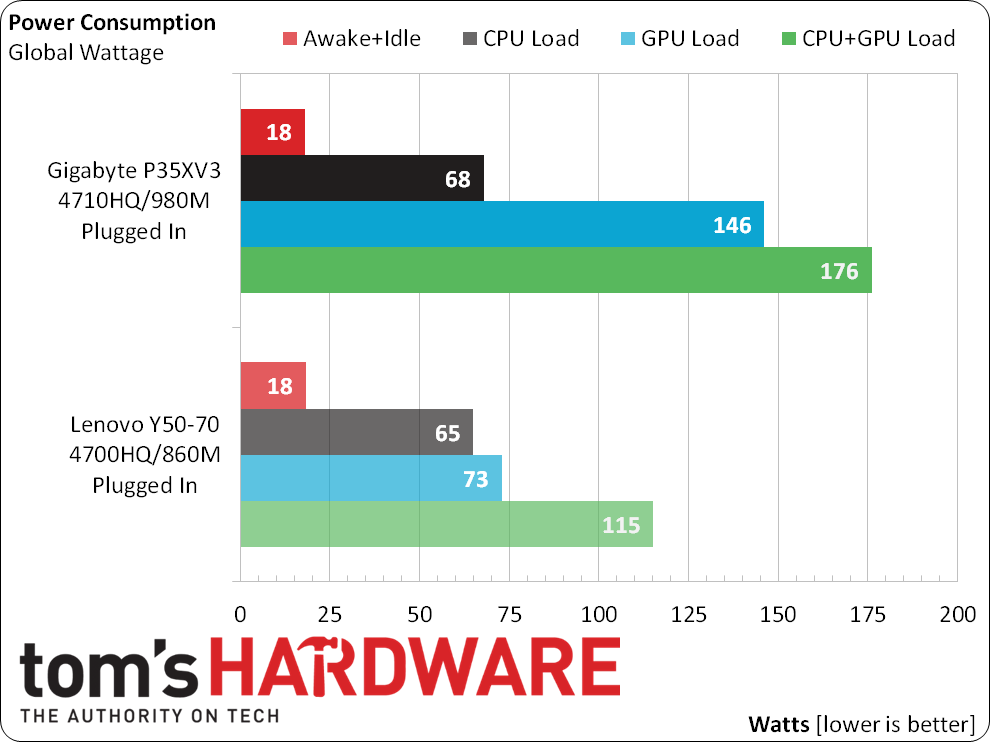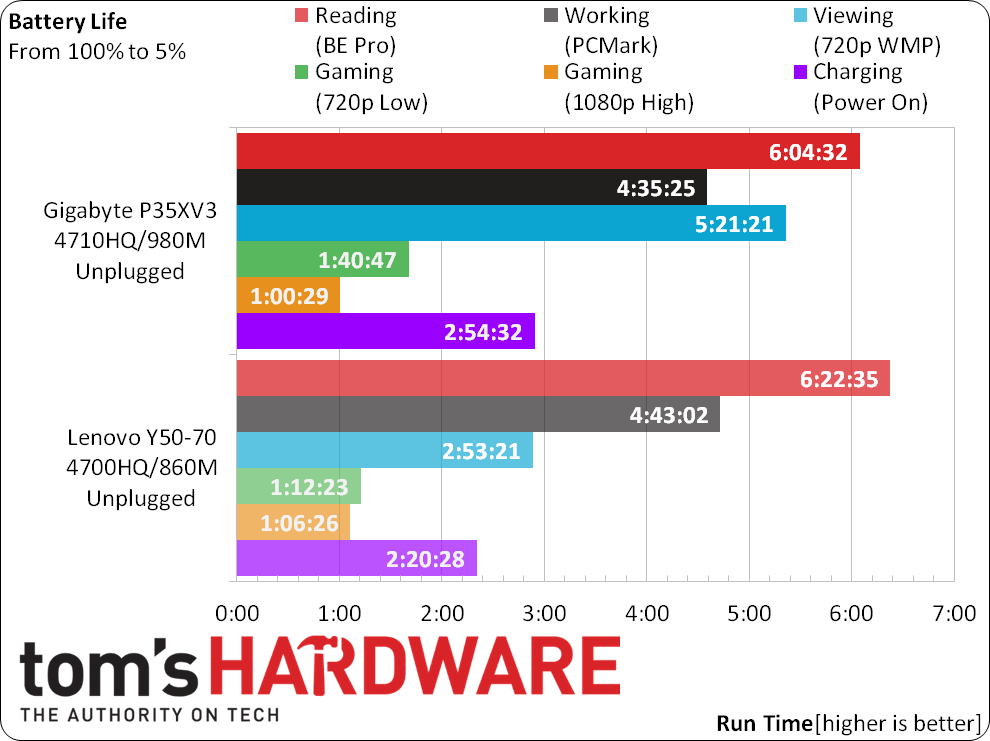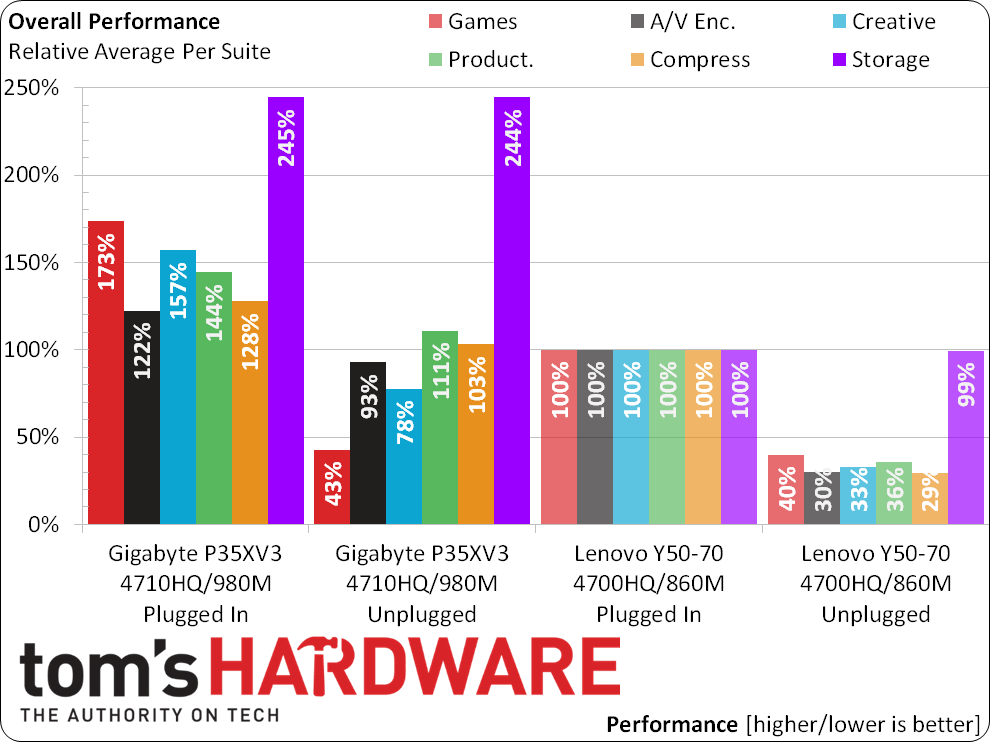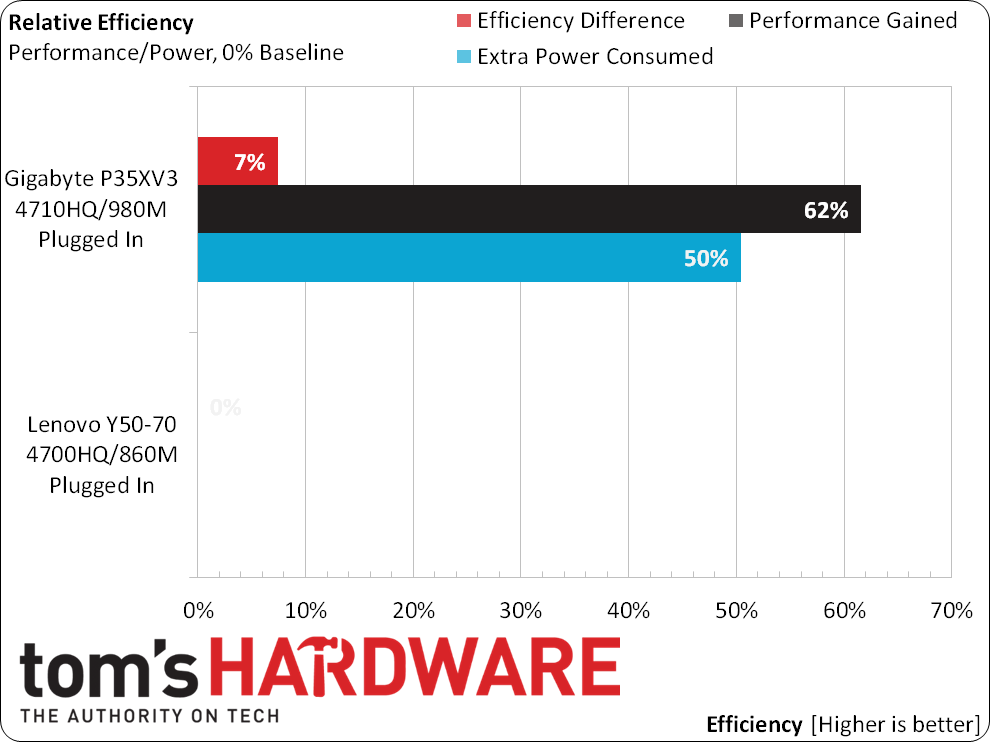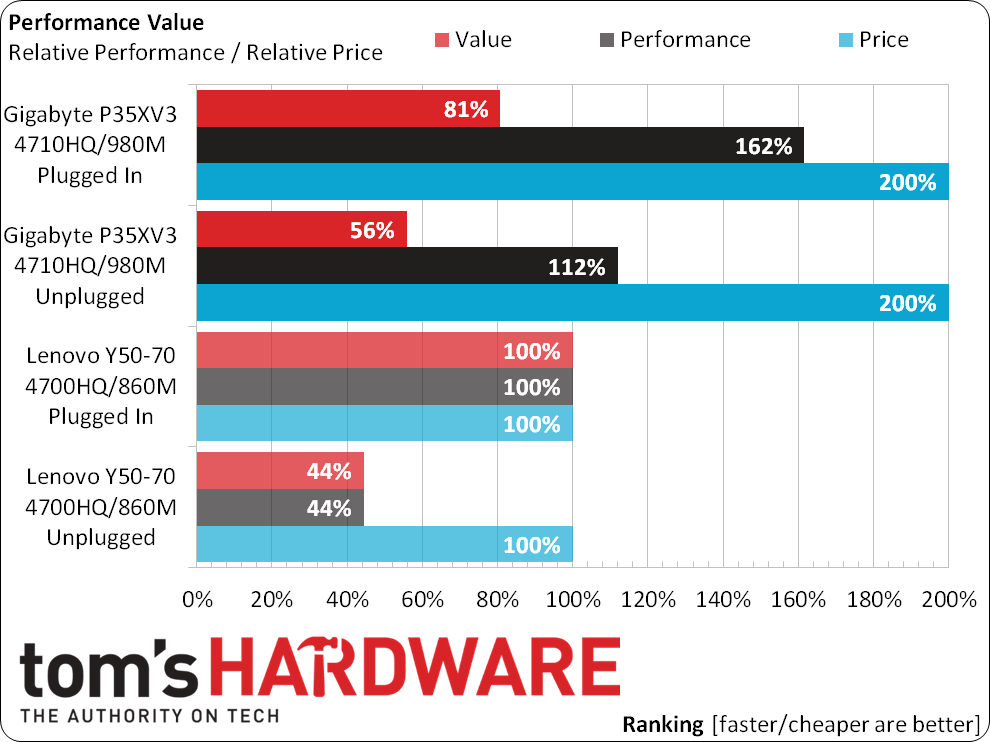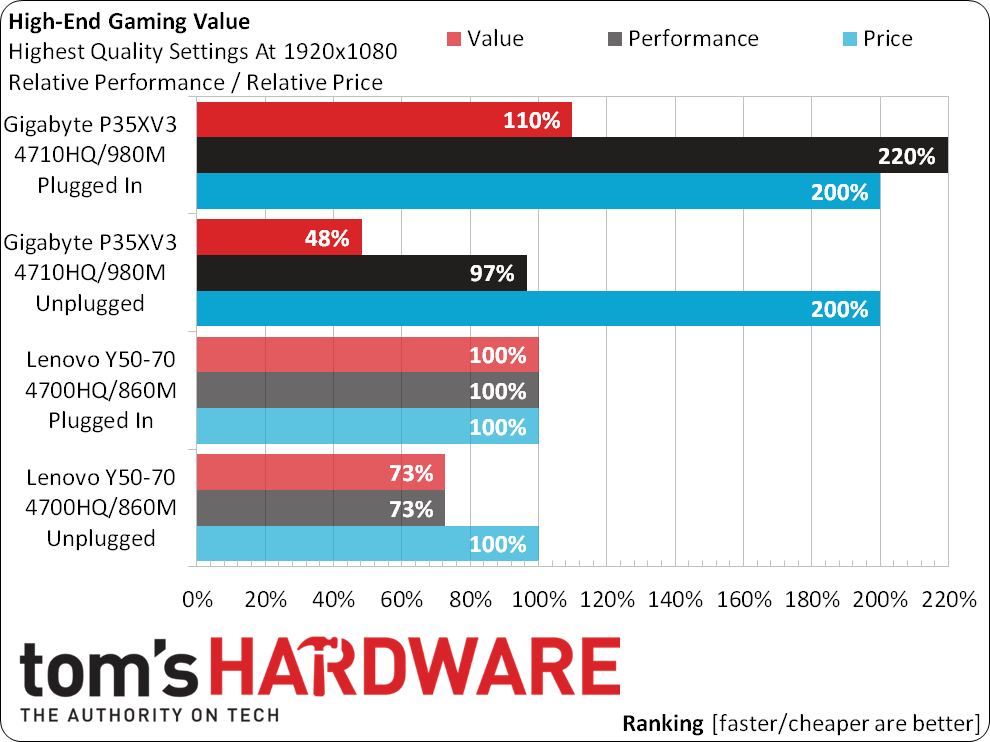Gigabyte P35X v3 Notebook Review: GTX 980M Gets Slim
Can Gigabyte fit true gaming performance into a 7/8”-slim notebook chassis? You do get a Core i7-4710HQ and GeForce GTX 980M, after all.
Why you can trust Tom's Hardware
Energy, Efficiency And Verdict
Rated at the same 47W as the lower-model Y50-70 processor, the P35X v3’s Core i7-4710HQ pulls a scant 3W more under a threaded and AVX-optimized Prime95 load. Both notebooks even have the same idle power use, though the hefty GeForce GTX 980M draws far more energy under load.
We can definitely say that the P35X v3’s power adapter is oversized, but we have no idea by how much. Rated at 180W output, it consumes a maximum 176W input power with the notebook fully loaded. The only efficiency rating we find is UL Energy Verified with a C in the logo, though a rated maximum of 2.34A input at 100V could indicate a 180W-out to 234W-in ratio (77% efficient at full load). It’s also OK to scream common sense at household schoolchildren for unplugging your power brick; our meter reads 0W consumed with the notebook plugged in, charged up and powered off.
The P35X v3 is lighter than the Y50-70, in spite of its higher-end graphics. It also has a far more-capacious battery, in spite of its inclusion of an optical drive. In other words, it’s a comparative packaging miracle that Gigabyte's offering serves up better run time under certain conditions, including low-load games where Nvidia Battery Boost actually improves battery life rather than performance.
Remembering that the P35X also costs twice as much as the Y50-70, we hoped for a big turnout in overall performance. We see that big gain only in storage, where its striped pair of SSDs perform synthesized program loads nearly 2.5 times more quickly (math professor says 59% quicker, or in 41% as much time) compared to the Y50-70’s hybrid drive. Games don’t quite reach the 2x mark, though they could if we focused only on our highest settings.
A 62% gain in performance that requires 50% more energy to achieve yields a 7% gain in efficiency for the P35X v3.
If we jumped a couple charts up, we’d see that CPU-based A/V encoding drags down the P35X v3’s lead, primarily because its CPU is only 100MHz faster. That means it’s only 62% more powerful than the Y50-70 in the balance of applications, and is only worth 62% more. Gamers know that’s not the whole truth though, as will anyone who wants to load programs in less than half the time or take advantage of its higher graphics resolution.
The real story is that if you pay twice as much for a new gaming notebook, you’re probably not going to settle for the image quality of a ten-year-old console. At the highest quality settings and 1920x1080, the twice-as-pricey Gigabyte notebook averages frame rates that are 2.2 times higher. Its hefty graphics module is often a requirement for these settings and, depending on whether you really want this quality or not, the battery is large enough to provide one to two hours of off-the-grid play time.
Get Tom's Hardware's best news and in-depth reviews, straight to your inbox.
But what about 2880x1620 gaming? The question for us is, are we really willing to turn down our image quality in order to support increased resolution at playable frame rates? Most users will require huge fonts at the notebook’s native resolution, and it’s configured that way by default. Buyers looking for better value could potentially save $200 by choosing a P35X v3 with a 1920x1080 panel. Further savings can be obtained by ordering a model with fewer mSATA SSDs and/or memory modules, though either of those changes could make the unit feel slower. We’re happy with this one, minus the expensive display.
-
blackmagnum Please rank the top gaming laptop line of the Taiwanese brands: Gigabyte, Asus, Acer and MSI. Which offer better durability, expandability, price to performance and bragging rights?Reply -
Agera One How the gigabyte laptop gives the same 30.4 FPS in GRID 2 both when "No AA" and "8x AA" in all three resolutions???Reply -
ashburner Did you test heat and noise? Does this thing sound like a jet engine during normal productivity or gaming?Reply -
Au_equus One of the main points about doing a thinner FF than say a ASUS G751JY, is thermals, in regards to whether GB can keep it in check. The G751JY is able to keep the palm rest <10C above ambient. What about the P35X v3?Reply -
theDoItYourselfAmeture Wile the P35x v3 may not cool components as well as the G751jy (the asus is over twice as thick) The palm rest is actually cooler than normal body temperature so it wont feel warm, the same cannot be said for the keyboard as it gets kinda toasty especially with that i7 and the 980m in that slim package. But it works, and works well enough. With arctic silver thermal compound and undervolting the cpu, temps stay in the mid to low 80's when in battlefield 4 on ultra. A cooling pad also helps when you want to game as well, even though its not needed when doing word or internet.Reply
This thread is dedicated to this laptop and is actually full of awesome information even though the op decided to return it. If you are really interested in this small form factor laptop then I suggest you look at the p35w v3 cf4 as its the same chassis but with the 970m so it stays cooler and its cheaper and comes with an ssd wile giving great fps in almost every game on ultra
(information taken form the forum from various posts)
http://forum.notebookreview.com/threads/gigabyte-p35x-v3-owners-lounge.764645/ -
gamebrigada Why are they releasing gaming laptops under their brand name when they have AORUS in a similar price range but WAY better design and specs. Why are they competing with themselves?Reply -
TechyInAZ Gigabyte makes excellent gaming laptops, but they have bad cooling. I had a Gigabyte q2532N and it couldn't even take both cpu and gpu at 100% without nearly overheating.Reply -
Damn_Rookie Reply
It's explained in the article:15265323 said:How the gigabyte laptop gives the same 30.4 FPS in GRID 2 both when "No AA" and "8x AA" in all three resolutions???
Unlike fixed-frequency battery-saver mode, Nvidia Battery Boost modulates GPU frequency to provide a target frame rate at the lowest possible power consumption. Though this sounds like a great way to conserve battery power, the technology actually increases power consumption in situations where the old method failed to produce playable frame rates. We left the original 30 FPS target in place.
So when unplugged, the system modulates GPU usage to maintain a constant 30 FPS.
